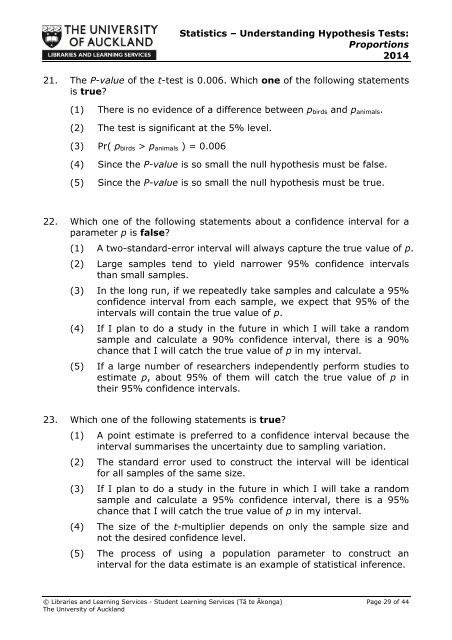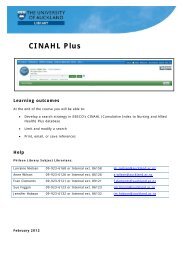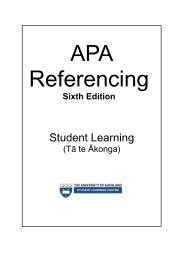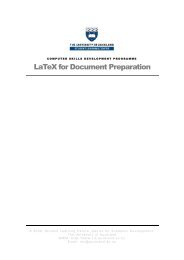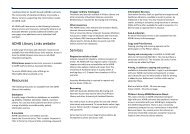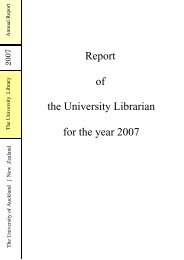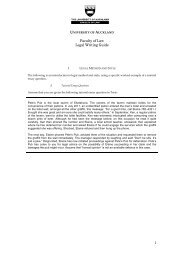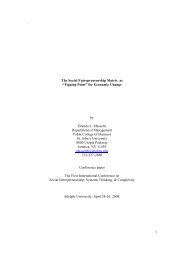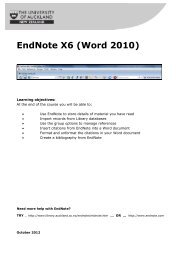STATISTICS â UNDERSTANDING HYPOTHESIS TESTS
STATISTICS â UNDERSTANDING HYPOTHESIS TESTS
STATISTICS â UNDERSTANDING HYPOTHESIS TESTS
You also want an ePaper? Increase the reach of your titles
YUMPU automatically turns print PDFs into web optimized ePapers that Google loves.
Statistics – Understanding Hypothesis Tests:Proportions201421. The P-value of the t-test is 0.006. Which one of the following statementsis true?(1) There is no evidence of a difference between p birds and p animals .(2) The test is significant at the 5% level.(3) Pr( p birds > p animals ) = 0.006(4) Since the P-value is so small the null hypothesis must be false.(5) Since the P-value is so small the null hypothesis must be true.22. Which one of the following statements about a confidence interval for aparameter p is false?(1) A two-standard-error interval will always capture the true value of p.(2) Large samples tend to yield narrower 95% confidence intervalsthan small samples.(3) In the long run, if we repeatedly take samples and calculate a 95%confidence interval from each sample, we expect that 95% of theintervals will contain the true value of p.(4) If I plan to do a study in the future in which I will take a randomsample and calculate a 90% confidence interval, there is a 90%chance that I will catch the true value of p in my interval.(5) If a large number of researchers independently perform studies toestimate p, about 95% of them will catch the true value of p intheir 95% confidence intervals.23. Which one of the following statements is true?(1) A point estimate is preferred to a confidence interval because theinterval summarises the uncertainty due to sampling variation.(2) The standard error used to construct the interval will be identicalfor all samples of the same size.(3) If I plan to do a study in the future in which I will take a randomsample and calculate a 95% confidence interval, there is a 95%chance that I will catch the true value of p in my interval.(4) The size of the t-multiplier depends on only the sample size andnot the desired confidence level.(5) The process of using a population parameter to construct aninterval for the data estimate is an example of statistical inference.© Libraries and Learning Services - Student Learning Services (Tā te Ākonga) Page 29 of 44The University of Auckland


